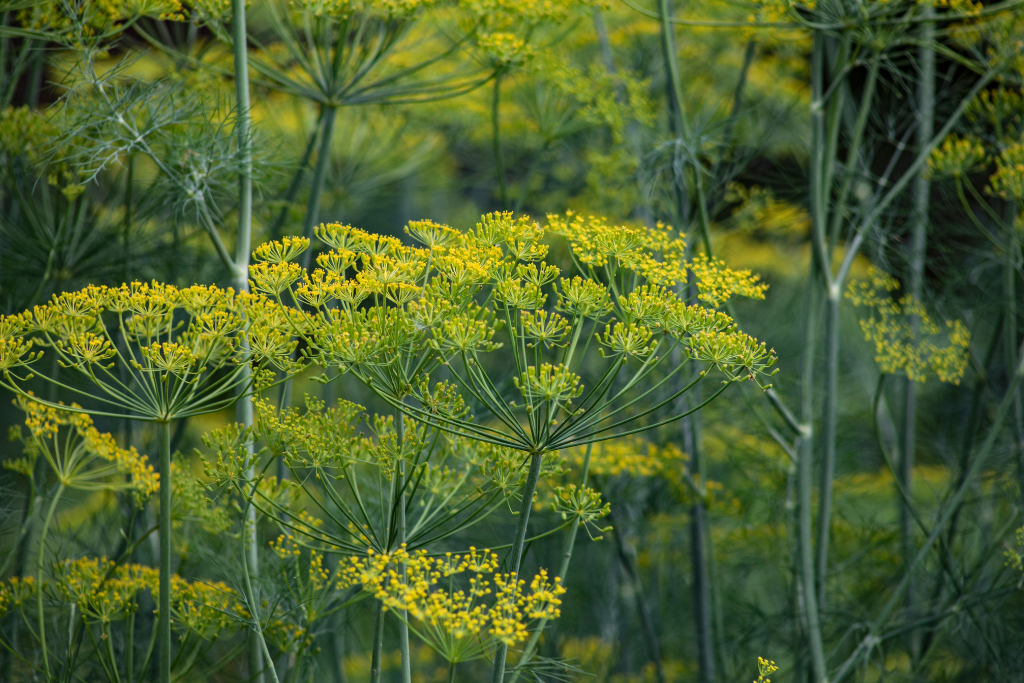
That refreshing feathery herb that tastes like summer- it’s the lover in pickling recipes and seafood dishes and a staple in the garden of many home cooks. Believe it or not, there are other plants out there that could easily be mistaken for Dill. Without tasting them, you wouldn’t have a clue!
Dill can be a real chameleon in the garden when it comes to finding it. It seems to blend in with other plants and herbs. But fear not; this article will uncover how to identify Dill and the differences between the Dill doppelgangers. That way, you can avoid any unwanted surprises in the kitchen later on!
How to Spot the Real Dill!

This cool-season annual herb grows to a height of about 2-3 feet (60-90cm). It has delicate feathery leaves that are finely divided and like mini ferns. The foliage spreads to about 1 foot wide (30cm), and the stems are smooth and hollow. The leaves range in color from blue-green to yellow-green and are soft and pliable to the touch.
As with many other herbs, Dill holds a strong fragrance, and its unique smell is one of the giveaways. The fragrance of Dill is often described as a mix of sweet and tangy with citrusy hints. The juvenile plants hold the most scent, so be sure to take a whiff when the plant is young.
Depending on the season, you can expect to see dill showcase its small yellow flowers set in umbrella-shaped clusters. Flowers usually bloom around mid-summer- June or July if they are in the correct weather conditions. Dill can be found in the wild in fields or along the roadside, as the seeds can be spread by the wind after the flowering period.
Dilly-Dally No More: How Dill is Used
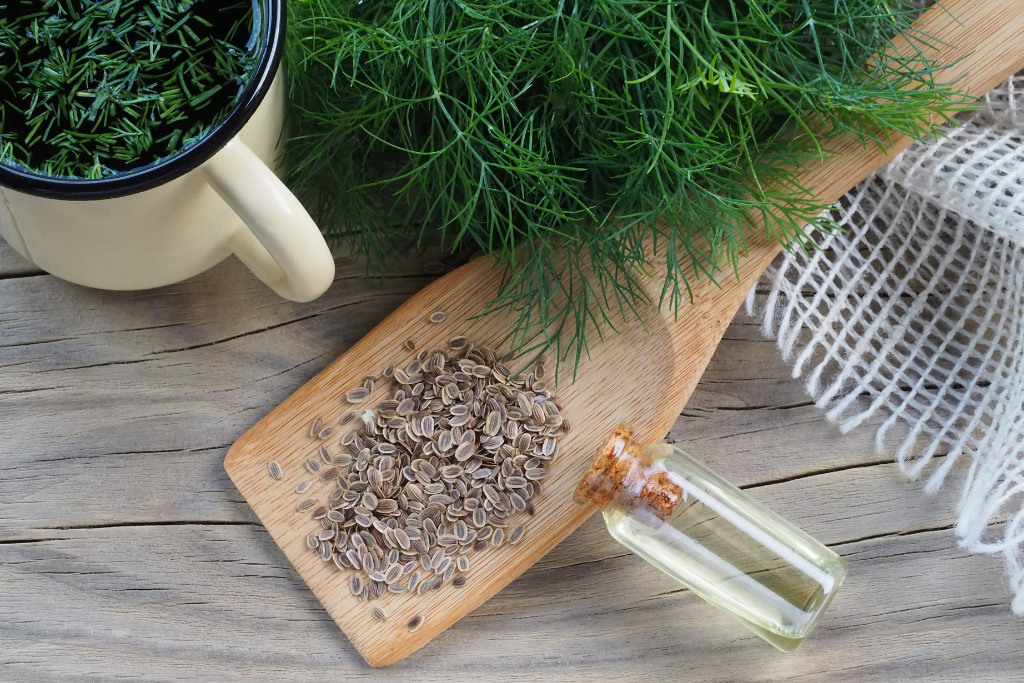
Not only is dill used as a versatile herb in the kitchen, but it has several health benefits too. It’s broadly associated with pickles but can add a touch of flavor to dishes, including soups, salads, meat, and dips. My favorite is when its tangy flavor is paired with lemon and olive oil for a dressing.
With its Mediterranean and western Asian roots, it has been used in traditional medicines for treating several ailments. Dill is known to be packed with vitamins and minerals, including vitamin c, manganese, and iron. The rich source of fiber that dill holds aids digestion and promotes overall gut health.
The health benefits don’t stop there- Dill contains flavonoids which are plant compounds with antioxidant properties. These antioxidants protect the body from damage by free radicals, which contribute to the development of diseases.
I’m no doctor, but adding Dill to your diet seems to do wonders for your health and well-being!
Now you know a bit about how to detect Dill and its beautiful uses, let’s take a glance at the plants that look like Dill.
Fennel
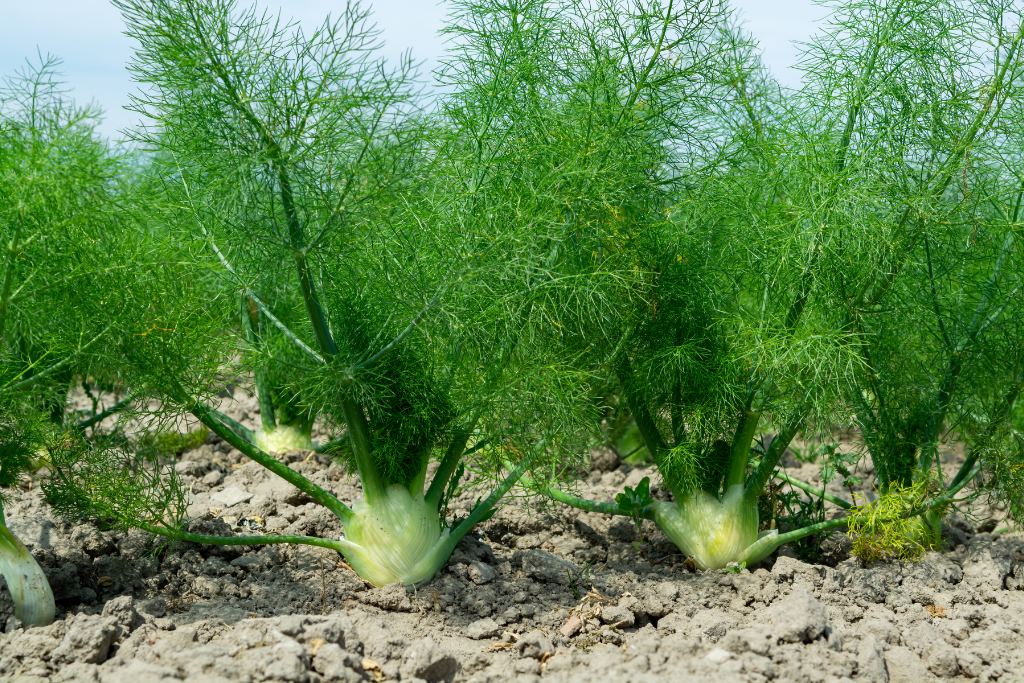
Fennel is the most commonly confused herb with Dill, and for a good reason- they are almost identical. Fennel has the same lacey fine leaves and delicate stems as Dill, but there are a few telltale differences.
For one, Fennel grows a thicker stem, and its leaves are slightly wider, and secondly, fennel can grow to a staggering height of 6 feet (1.8m) or more. Fennel is recognizable by its thick bulbous base that tapers into its thick tall stems.
So, you’re probably wondering what the big Dill is? About mistaking fennel for dill. They both have a licorice-type flavor, right? Not exactly. Fennel is definitely sweeter and milder than Dill, with a more intense anise flavor.
| Common Name | Fennel |
| Scientific Name | Foeniculum vulgare |
| Origin | Mediterranean |
| Family | Apiaceae (Carrot Family) |
| Type | Perennial herb |
| USDA Hardiness Zone | 5-10 |
| Temperature | 60-70F (15-21C) |
| Humidity | 40-50% |
| Soil | Well drained, pH6.0-7 |
| Light | Full sun |
| Fertilizer | 10-10-10 NPK Early spring application |
Tarragon

Tarragon is a versatile herb that is often compared to Dill. While they have their differences, both herbs have a distinctive flavor and are widely used in cooking. Tarragon is a perennial herb that grows up to 2-3 feet (60-90cm) tall and is recognized by its bright green glossy elongated leaves.
The growth habit of Tarragon is somewhat different to Dill as it tends to grow in a more upright manner with its narrower leaves. Tarragon tends to have a more robust flavor than dill and is used in smaller quantities. Native to Eurasia, this herb is now found in garden pots all around the world. Tarragon flowers are small, pale green or yellow, and bloom in clusters on the endpoints of the stems.
While they may seem like a delicate touch to the garden, most gardeners will snip them off to allow the plant to focus its energy on producing leaves and stems. By keeping some flowers on the tarragon plant, you will be able to let it produce seeds that you can collect and store to be planted for the following season.
I love that seed saving is a sustainable practice that gives you a more substantial plant each year!
| Common Name | Tarragon |
| Scientific Name | Artemisia dracunculus |
| Origin | Eurasia |
| Family | Asteraceae |
| Type | Herbacious Perennia |
| USDA Hardiness Zone | 4-7 |
| Temperature | 60-80F (16-27C) |
| Humidity | 40-60% |
| Soil | pH 6.0-7.5 |
| Light | Full Sun to Part Shade |
| Fertilizer | 10-10-10 or 12-12-12 Early Spring |
Majoram
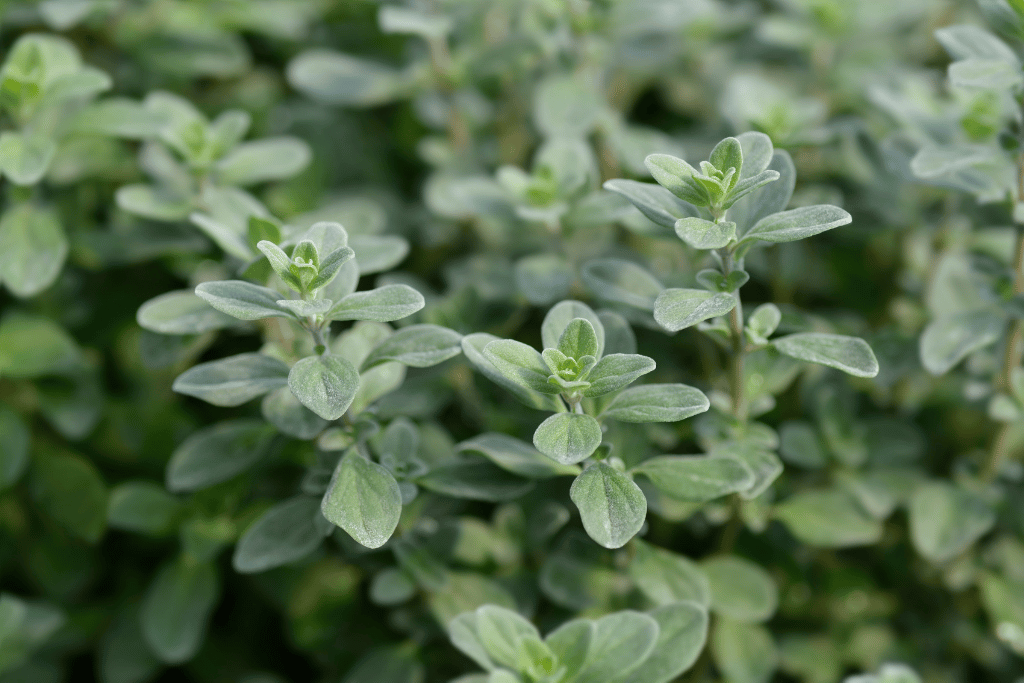
Majoram differs from Dill in terms of taste, aroma, and appearance. Dill has a distinct anise flavor and aroma, while Marjoram has a sweeter citrusy flavor and fragrance. When it comes to appearance, marjoram has small oval-shaped leaves that are pale green in color and typically grow to be around 2 feet (60cm) tall.
Marjoram is a tender perennial that has trouble surviving harsh winters, whereas Dill has the capability to reseed itself. Despite their differences, they both have a wide range of culinary uses. Marjoram is sometimes referred to as the ‘joy of the mountains’ and belongs to the mint family.
This relatively small growing herb blooms dainty pink- and purple-colored flowers that are born on slender stems and appear in late summer. While these flowers are less appealing than other herbs, the color change adds some visual interest to the garden.
| Common Name | Majoram |
| Scientific Name | Originanum majorana |
| Origin | Meditteranean |
| Family | Lamiaceae |
| Type | Herbaceous Perrenial |
| USDA Hardiness Zone | 9-11 |
| Temperature | 70-85F (21-29C) |
| Humidity | 40-70% |
| Soil | pH 6.5-7.5 |
| Light | Full sun |
| Fertilizer | 10-10-10 NPK Early Spring |
Parsley

Some say mistaking Parsley for Dill means diddly squat but, in actual fact, there are some significant differences between these two herbs. The flat-leaf variety of Parsley has leaves similar to Dill but not as delicate or feathery.
Flat leaf Parsley, or French parsley as it is sometimes referred to, tends to have a deeper color and grows lower on a thicker stem. Parsley fans out at the base of the plant and can reach a width of 12-18 inches (30-45cm) and is a biennial herb, so it takes two years to complete its lifecycle. In the second year of the growth cycle, Parsley produces a long stem that is topped with greenish-yellow flowers.
Allowing the Parsley to go to seed will enable you to collect a batch of seeds to germinate the following season.
Parsley is better suited when added to dishes rather than using its strong flavor as a main dish. Although some parts of the world, like eastern Europe and the Middle east, do use Parsley as a main ingredient.
| Common Name | Parsley |
| Scientific Name | Petroselinum crispum |
| Origin | Mediterranean region South Algeria, Tunisia |
| Family | Apiaceae |
| Type | Biennial Herb |
| USDA Hardiness Zone | 5-9 |
| Temperature | 60-70F (15-21C) |
| Humidity | 40-70% |
| Soil | pH 6.0-7.0 |
| Light | Full sun to Part shade |
| Fertilizer | 10-10-10 NPK Every 4-6 Weeks |
Caraway
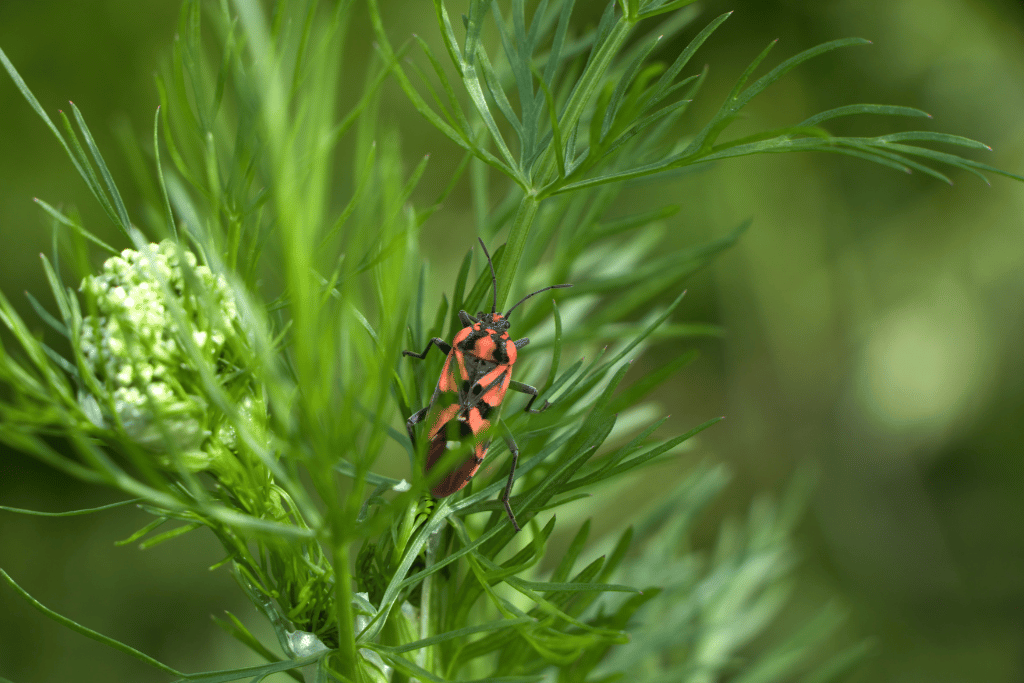
This simple herb is known and loved by many and often found in the background of a range of dishes. While Caraway and Dill are relatives of the same family, Caraway tends to have a more earthy, pungent taste. These plants look almost identical in their earlier stages of life, and as they mature, their differences become more apparent.
As the Caraway grows, the leaves become rounder and less fern-like, which makes it more evident that it is not dill.
During the late summer, Caraway produces white, pink flowers that are flat-topped and grow on a thick upright stem. The individual flowers are a tiny ⅛ inch across with five rounded petals at the tips.
The flowers are similar to dill and fennel, so it’s no wonder they can be easily confused. Caraway is still an excellent herb to grow; its nutty flavor works incredibly well in baked goods and rye products.
| Common Name | Caraway |
| Scientific Name | Carum cavi |
| Origin | Europe, Asia, North Africa |
| Family | Apiaceae |
| Type | Biennial Herb |
| USDA Hardiness Zone | 3-7 |
| Temperature | 60-70F (15-21C) |
| Humidity | 50-70% |
| Soil | pH 6.0-7.0 |
| Light | Full Sun to Part Shade |
| Fertilizer | 10-10-10 NPK Applied early spring |
Cumin
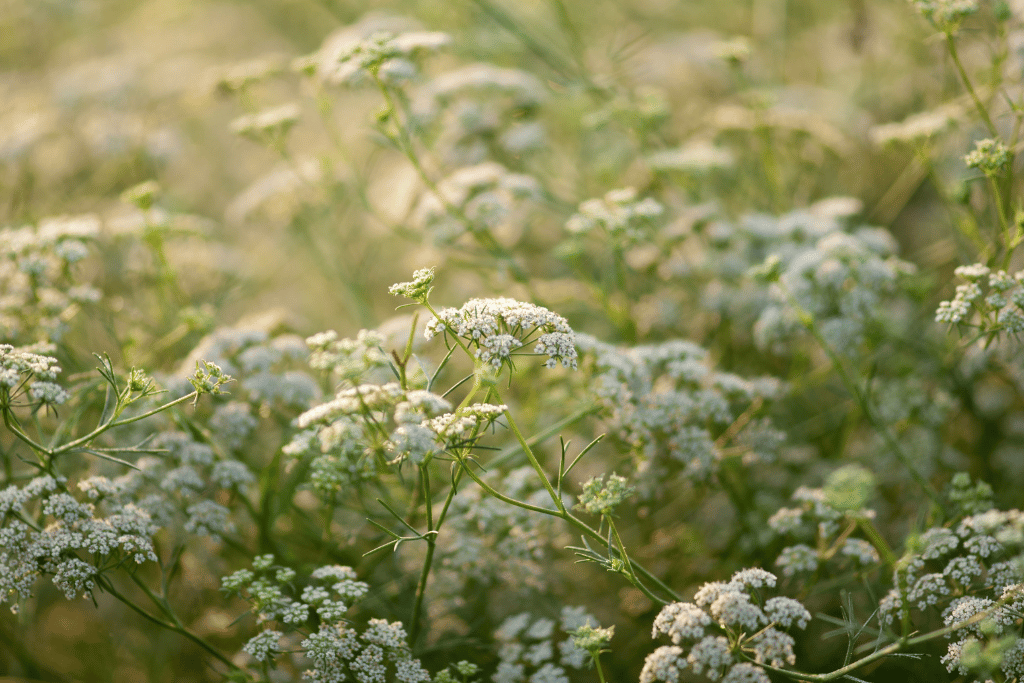
This flavorful spice is used for many different cuisines around the world. Cumin has a warm earthy flavor that is often described as bitter with a hint of sweetness. This annual herb can grow up to 1-2 feet tall and the leaves are typically a bit smaller and finely divided than dill leaves.
As the cumin plant blooms in late summer, it displays small white and pinkish flowers arranged on clusters called umbels. Each umbel consists of 5-7 bisexual flowers and the plant can produce many umbels during its flowering stage. The umbels are left to dry and you can collect the dry seed to use in the kitchen.
When it comes to cultivation the cumin acts in the same way and is easily grown from its small oblong-shaped seed. Cumin seeds are much smaller than dill seeds which are round and have a smooth surface.
The flavor of cumin is quite different from dill as dill has a delicate sweet slightly tangy flavor. While cumin is used in many dishes around the world particularly Mexican, Indian, and middle eastern cooking, dill is commonly associated with pickling and seafood dishes.
| Common Name | Cumin |
| Scientific Name | Cuminum cyminum |
| Origin | Mediterranean and Egypt |
| Family | Apiaceae |
| Type | Herbaceous Annual |
| USDA Hardiness Zone | 9-11 |
| Temperature | 60-68 F (15-20C) |
| Humidity | 40-60% |
| Soil | pH 6.0- 7.0 |
| Light | Full Sun to Part Shade |
| Fertilizer | 10-10-10 NPK. Once at the start of the growing season and after harvest |
Anise

While Anise and Dill are both members of the Apiaceae family, they do have similar characteristics and also some differences too. In terms of appearance, they both consist of tall thin stems with delicate feathery leaves. They both produce dainty white or yellow flowers in an umbrella shape too. Anise has more delicate leaves than dill, and its flowers are more compact and clustered.
Typically, anise will reach a similar height and spread of dill- 23-3 feet tall and 1-2 feet wide but tends to grow in a more upright branching fashion. The growth habit is relatively symmetrical and round in shape, whereas dill sprawls out a lot more.
Regarding these plants’ flavor and aroma differences, anise has a sweet licorice-like flavor and is more commonly used in desserts and sweet dishes. Overall, these plants grow in the same conditions and look very similar, so they can be easily mistaken.
I planted anise away from my dill so there wouldn’t be any confusion when it came to harvesting.
| Common Name | Anise |
| Scientific Name | Pimpinella anisum |
| Origin | Eastern Mediterranean and Southwest Asia |
| Family | Apiaceae |
| Type | Herbaceous Annual |
| USDA Hardiness Zone | 9-11 |
| Temperature | 65-75 F (18-24C) |
| Humidity | 40-60% |
| Soil | pH 6.0-7.0 |
| Light | Full Sun to Part Shade |
| Fertilizer | 10-10-10 NPK. Once at the start of the growing season, |
The Distinctions of Dill Fully Explored
So, there you have it- a guide to the plants that look like dill but aren’t! These imposters are all worthy additions to any herb garden as they all carry their own distinct flavor.
While mistaking one for another might not be the end of the world, it’s always good to double-check your plants before adding them to a recipe. After all, you don’t want to end up with an anise-flavored pickle!
I love the experimentation that comes with cooking with herbs, and it’s always great to mix up flavors- you never know, you might end up discovering a new favorite herb you hadn’t thought of before!
Ready for More Herby Insight?
We’ve got all the tips and tricks to keep your herb garden thriving. Our website is well-equipped with all the necessary planting tools to get you started on your plant-growing journey.



